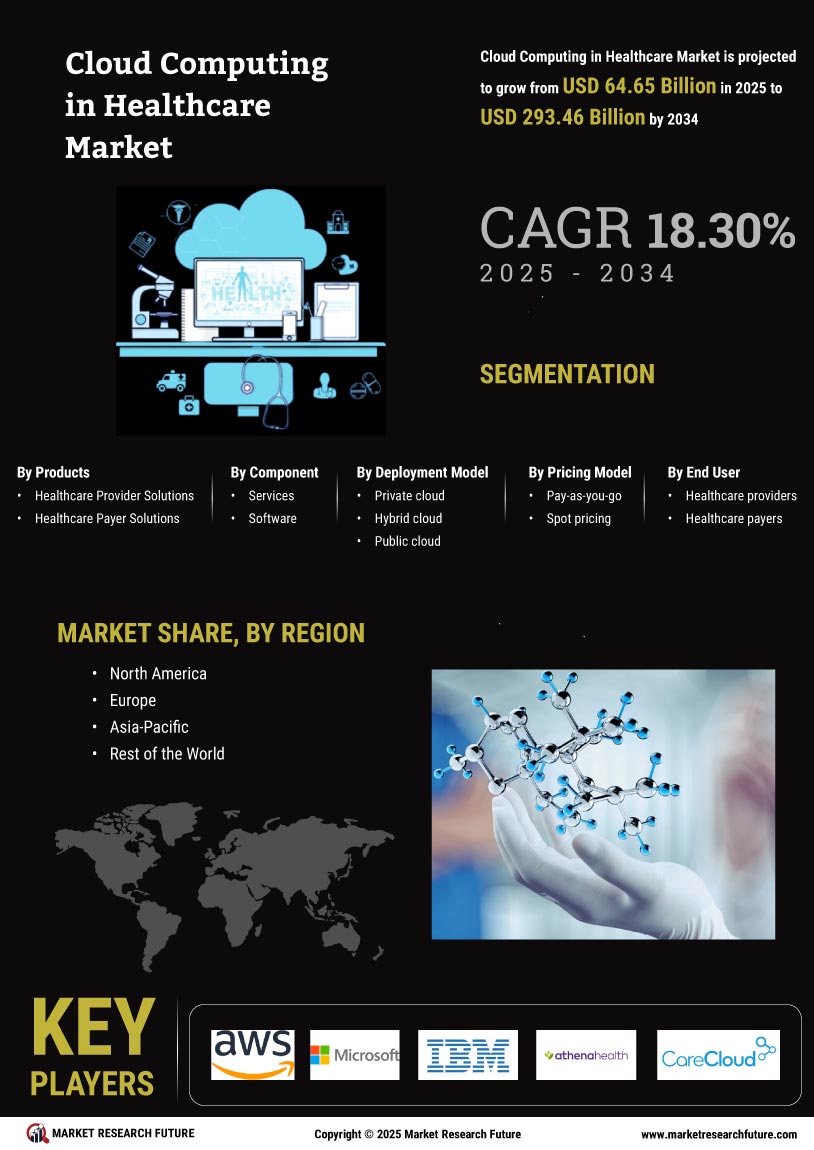Growing Focus on Patient-Centric Care
The Cloud Computing in Healthcare Market is witnessing a growing focus on patient-centric care, which emphasizes the importance of tailoring healthcare services to individual patient needs. Cloud computing facilitates the collection and analysis of vast amounts of patient data, enabling healthcare providers to offer personalized treatment plans and interventions. This shift towards patient-centric models is supported by the increasing availability of health data analytics tools that leverage cloud technology. As a result, healthcare organizations are better equipped to understand patient preferences and outcomes, leading to improved satisfaction and adherence to treatment protocols. The trend towards patient-centric care is expected to drive further investment in cloud solutions, as providers seek to enhance the overall patient experience.
Enhanced Collaboration and Data Sharing
The Cloud Computing in Healthcare Market is significantly influenced by the need for enhanced collaboration and data sharing among healthcare stakeholders. Cloud platforms enable seamless access to patient records, treatment plans, and research data across various departments and organizations. This interconnectedness fosters a collaborative environment that can lead to improved patient care and more informed decision-making. As healthcare systems increasingly adopt integrated care models, the ability to share data securely and efficiently becomes paramount. Studies indicate that organizations utilizing cloud solutions for data sharing experience a 20% increase in operational efficiency, underscoring the importance of collaboration in modern healthcare.
Regulatory Compliance and Data Security
Regulatory compliance and data security are paramount concerns within the Cloud Computing in Healthcare Market. As healthcare organizations transition to cloud-based solutions, they must navigate a complex landscape of regulations, including HIPAA and GDPR. Cloud providers are increasingly offering services that ensure compliance with these regulations, thereby alleviating some of the burdens on healthcare organizations. The emphasis on data security is further heightened by the rising incidence of cyber threats targeting healthcare data. It is estimated that the healthcare sector could face losses exceeding 4 billion dollars annually due to data breaches. Consequently, the integration of robust security measures within cloud solutions is essential for maintaining patient trust and safeguarding sensitive information.
Cost Efficiency and Resource Optimization
Cost efficiency remains a critical driver in the Cloud Computing in Healthcare Market. Healthcare organizations are increasingly adopting cloud solutions to reduce operational costs associated with maintaining on-premises infrastructure. By leveraging cloud services, institutions can optimize resource allocation, minimize IT expenditures, and enhance scalability. Reports suggest that healthcare providers can save up to 30% on IT costs by migrating to cloud-based systems. This financial incentive is particularly appealing in an environment where budget constraints are prevalent. Furthermore, the ability to scale resources according to demand allows healthcare organizations to respond swiftly to changing needs, thereby improving overall service delivery.
Rising Demand for Remote Patient Monitoring
The Cloud Computing in Healthcare Market is experiencing a notable increase in demand for remote patient monitoring solutions. This trend is driven by the need for continuous patient care and the ability to track health metrics in real-time. As healthcare providers seek to enhance patient engagement and improve outcomes, cloud-based platforms facilitate the collection and analysis of patient data from various devices. According to recent estimates, the remote patient monitoring segment is projected to grow at a compound annual growth rate of over 25% in the coming years. This growth indicates a shift towards more proactive healthcare management, where cloud computing plays a pivotal role in enabling healthcare professionals to monitor patients outside traditional clinical settings.

















Leave a Comment